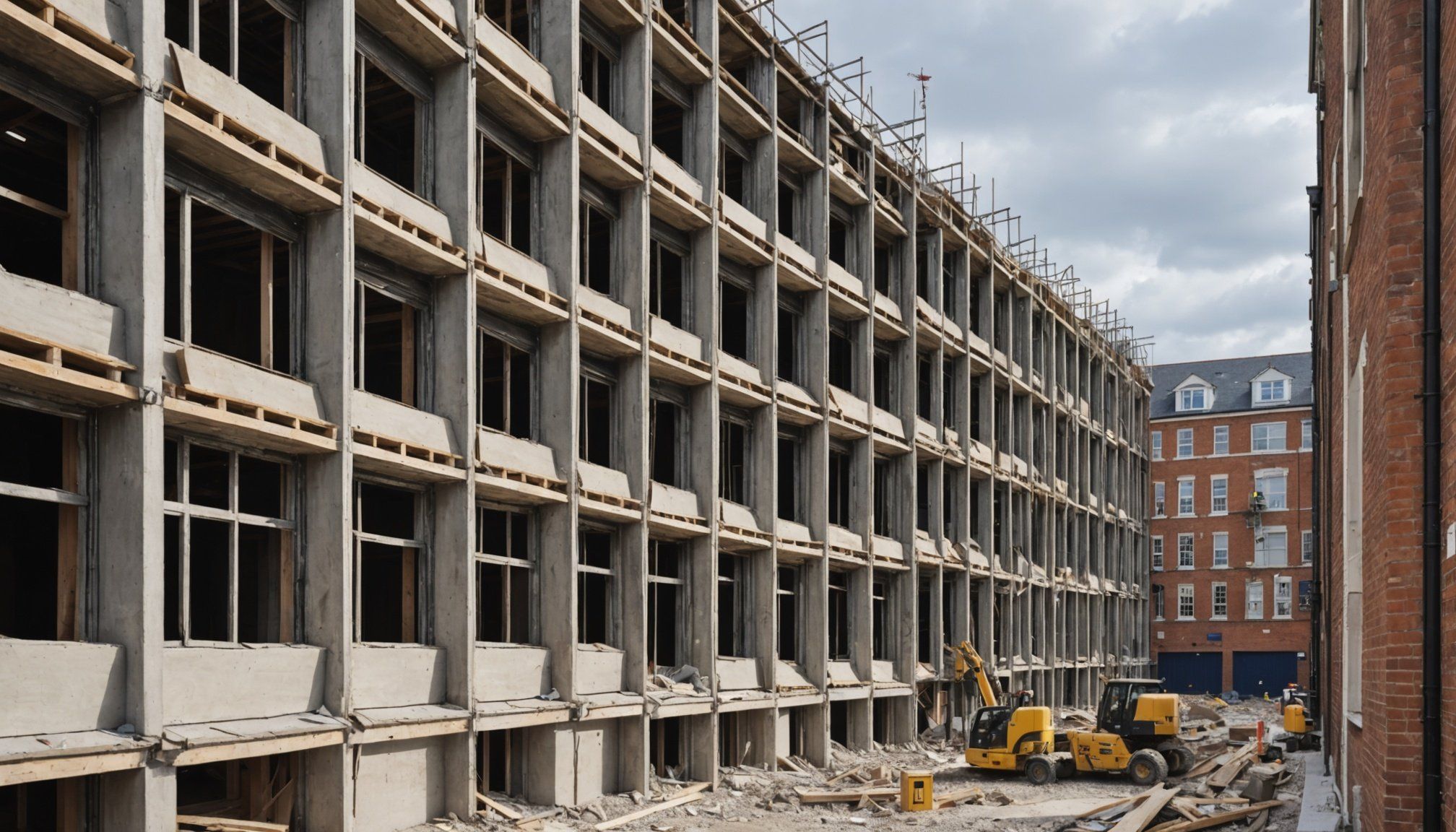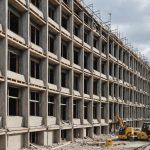Overview of UK Building Safety Regulations
Navigating the Building Safety Regulations in the UK can be complex, yet remains crucial for all involved in property development. In response to several high-profile incidents, the UK has introduced stringent regulations to ensure the safety of new constructions.
Key Compliance Requirements
For property developers, understanding and adhering to these requirements is paramount. Compliance involves a thorough evaluation of construction plans to meet fire safety standards, structural integrity, and safe escape routes. Developers must also ensure that high-rise buildings conform to specific fire safety materials and design features.
In the same genre : Essential Legal Guidance for Transforming a Scottish Heritage Property into a Boutique Hotel
To facilitate UK compliance, developers should establish a safety manager, maintain up-to-date documentation, and engage in routine safety audits. This systematic approach helps to identify potential hazards early and mitigate risks effectively. Non-compliance could result in significant penalties, including fines or legal action.
Legal Implications
The legal landscape surrounding building safety has been profoundly shaped by these regulations. Developers must remain aware of their legal responsibilities, as negligence can lead to severe consequences, ranging from project delays to liability lawsuits. Staying informed and proactive is essential in adapting to the evolving building safety framework, ensuring projects not only comply legally but also promote safer living environments.
This might interest you : Enhance your sales with real estate photography in evergreen
Impact on Property Development Costs
New regulations can significantly affect project costs in property development. As compliance becomes more stringent, developers often face increased compliance costs, which must be accounted for in early planning stages. These costs can encompass various aspects, from environmental assessments to safety measures, and directly impact the budget of a project.
For instance, a development project may require specific permits and inspections to ensure adherence to new standards, leading to unforeseen expenses. Stringent environmental regulations could also mandate the use of sustainable materials and technologies, further escalating costs.
A detailed breakdown of compliance costs highlights areas potentially affecting the budget. These may include:
- Environmental impact studies
- Safety equipment upgrades
- Training and compliance verification
Case studies reveal the budget impact on projects due to these factors. For example, a high-rise development in London witnessed an increase of 15% in its total costs due to recent sustainability regulations. Similarly, a residential community project in Manchester had to adjust its financial plan after introducing new fire safety standards, leading to additional expenses.
Through these examples, it’s evident how critical it is for developers to anticipate and plan for these changes to minimise financial strain.
Effects on Project Timelines
Project timelines can face significant extensions due to compliance with new regulations. These regulatory impacts often require developers to adapt their plans, which can introduce development delays. For instance, meeting environmental guidelines may necessitate additional data collection and analysis, causing unforeseen hold-ups. Such requirements can prolong the completion of projects, affecting budgeting and resource allocation.
In the realm of real estate development, numerous projects have encountered setbacks due to regulatory adherence. Take, for example, the construction of energy-efficient buildings. Adhering to green building standards may involve sourcing specialized materials that are not readily available, leading to delays. Furthermore, obtaining approval from regulatory bodies can be a time-consuming process that developers must factor into their scheduling.
To mitigate the impacts on project timelines, developers can adopt several strategies. These include early engagement with regulatory authorities to understand requirements thoroughly and incorporating potential delays into their initial project plans. Utilizing project management software can also help in tracking progress and adapting schedules swiftly in response to any unexpected changes. By preparing for regulatory impacts from the outset, developers can better navigate the intricate landscape of compliance and minimize disruptions.
Case Studies of Affected Developments
Exploring property development case studies offers invaluable insights into how safety regulations reshape the industry. A notable example involves a high-rise project in London that successfully recalibrated its design and construction processes to comply with evolving safety standards. This development not only aligned with regulatory compliance but also set a benchmark for incorporating innovative safety solutions.
Real-world examples serve as a guide for navigating the challenges posed by new regulations. In one industrial complex case, the managers proactively engaged with regulatory bodies, ensuring a seamless adaptation to the safety protocols, which resulted in significant operational efficiencies. Consequently, this approach has underscored the importance of early and open communication with authorities.
Comparative analyses highlight the disparities between projects adhering to safety regulations and those that fail to. For instance, a residential development encountering delays due to non-compliance saw increased costs and diminished market reputation. In contrast, enforcement of stringent safety measures in compliant projects often leads to enhanced market trust and financial returns.
These lessons learned emphasize prioritizing compliance and foster an environment where safety and innovation flourish together, benefitting both developers and communities alike.
Expert Opinions and Insights
Industry experts are engaging in significant discussions about the implications of new building safety regulations. They highlight that while the regulations impose stricter safety measures, these changes are crucial for ensuring the protection of residents. Experts believe that the implementation of these building safety insights could lead to higher construction standards, which in turn may increase property values over time.
From developer perspectives, there is an acknowledgment of the challenges presented by adapting to these stringent regulations. Developers are investing in new technologies and materials to comply efficiently. They emphasize that innovation in construction processes is key to successfully meeting the demands of modern safety standards while maintaining cost-effectiveness.
As we look to the future, anticipated trends in building safety regulations suggest continuous evolution towards smart technology integration. The focus is likely to shift towards comprehensive risk assessments and real-time monitoring systems, offering enhanced predictive capabilities to prevent potential hazards. Industry leaders advocate for a proactive approach, encouraging collaboration between government bodies, developers, and communities to shape regulations that are both practical and protective. With ongoing advancements, industry experts anticipate positive impacts on building safety, benefiting both residents and stakeholders.
Future Trends in Building Safety Regulations
In a rapidly evolving world, building safety regulations are poised for significant transformations. Future Trends suggest that regulatory changes will incorporate advanced technologies to enhance both safety and efficiency. One area of focus is the integration of smart systems, such as sensors and automated alerts, which will inevitably influence how regulations are developed and enforced.
The Building Safety Evolution is expected to demand more sustainable building practices. A growing emphasis on eco-friendly materials and energy-efficient designs is anticipated to become part of standard regulatory requirements. These shifts aim to reduce environmental impact while maintaining structural integrity and occupant safety.
As we anticipate Regulatory Changes, property developers will likely need to adapt by adopting innovative construction techniques. This might involve more rigorous testing and compliance measures, all driven by data and analytics. Increasingly, digital tools will play a crucial role in planning and maintaining building safety.
Furthermore, regulatory bodies will likely leverage technologies such as AI and IoT to monitor compliance in real time. This forward-thinking approach ensures that buildings not only meet safety standards but also adapt to emerging risks and challenges effectively.
Practical Advice for Property Developers
Navigating the intricacies of compliance in property development can be daunting. Here’s a guide on practical steps and best practices to stay ahead. First, ensure you are equipped with effective Developer Guidance. Begin by thoroughly understanding the new regulations specific to your jurisdiction. This involves assessing local planning permissions and environmental mandates.
Compliance Strategies are imperative. Establish a comprehensive checklist that highlights key regulatory requirements. Regularly consult with legal advisors to ensure adherence, and update your strategies as regulations evolve. Empower your team through continuous training on Best Practices to mitigate potential risks.
When facing regulatory challenges, adopt a collaborative approach. Engage with industry groups and regulatory bodies to gain insights and best practices. Attending seminars and workshops can also offer valuable networking opportunities and resources.
For further reading, explore detailed compliance checklists available in industry publications. These resources can guide you through complex requirements, providing clarity and actionable steps. Accessing the latest whitepapers and government reports will bolster your understanding and preparation.
By following these guidelines, property developers can navigate regulations confidently and efficiently, ensuring successful project outcomes.
Resources for Further Assistance
Navigating the complex world of building compliance can be daunting, but compliance resources are designed to ease this process. Whether you’re a seasoned developer or new to the field, understanding building regulations guidance is crucial for ensuring safety and legality in construction projects.
Industry organisations provide a wealth of information; reaching out to regulatory bodies is a recommended step. They often offer detailed building regulations guidance to help interpret codes and processes. For instance, local authorities may have dedicated helplines or online portals.
Moreover, professional developer support networks can offer valuable insights. These networks consist of experienced professionals who are keen to share their knowledge, further simplifying the complexities of compliance.
For continued learning and keeping up with industry developments, various suggested literature and online resources can be instrumental. Many authoritative books and journals offer in-depth analysis of building safety standards, while reputable websites often publish updates and commentary on emerging trends.
Engaging with these resources can provide the support needed to confidently navigate the landscape of building regulations, ensuring that projects meet both safety and quality standards.











